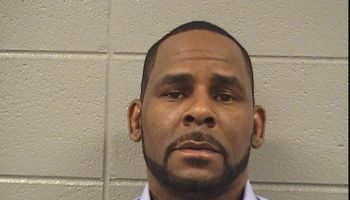begins today, allowing Republican presidential hopefuls little time to process tonight’s results in Florida before shifting more focus to the Buckeye State.
Veterans of Ohio elections see several potential paths to victory.
Run in rural areas, advises one social conservative, Phil Burress of Citizens for Community Values, based in Cincinnati. He notes that voters in all but one of Ohio’s big media markets voted against President George W. Bush in 2004 — the exception being Hamilton County — and Bush won Ohio anyway.
Run up the numbers in the strongly Catholic Republican corridor between Interstate 75 and the Indiana border, advises a Democrat, Steve Fought, who studies winning margins in those little-watched counties. And if you’re Rick Santorum, the former U.S. senator from Pennsylvania, also spend time along Ohio’s eastern border with Pennsylvania and West Virginia because voters know you a little better there, adds Fought, a strategist for U.S. Rep. Marcy Kaptur, a Toledo Democrat facing her own election battle.
On further discussion, though, these and other strategists say: Maybe not.
The road through Ohio typically requires candidates to make decisions based on voter geography and strong political organization. But the short time between today and the March 6 primary election, among other factors, could make traditional calculations impractical.
Besides, Santorum may have harmed his chances when he failed to qualify for local-level delegates in three Ohio congressional districts — two of them along that aforementioned border. Santorum backers dispute that.
What happens in five weeks in Ohio could depend first upon what happens in Florida, where former Massachusetts Gov. Mitt Romney has topped recent polls. Regardless of who wins Florida, Romney, former U.S. Rep. Newt Gingrich, Santorum or Texas. U.S. Rep. Ron Paul will still need hundreds more delegates to become their party’s nominee and challenge President Barack Obama in November.
So today starts the sprints toward Super Tuesday, March 6, with Ohio and its 66 delegates one of the biggest prizes.
Ohio Republicans are “very excited, particularly right now, that it’s a competitive race,” said Cuyahoga County Republican Party Chairman Rob Frost, who is staying neutral. “We haven’t had a real competitive primary on the Republican side in quite some time.”
Candidates are already lining up Ohio visits.
Romney will headline the Cuyahoga County Republican Party’s Lincoln Day dinner on Feb. 16 in Mayfield Heights. Two days later, Santorum will be the main attraction at the Summit County GOP’s Lincoln Day event.
Santorum also is scheduled to be in Columbus that day to speak at an Ohio Christian Alliance luncheon.
A handful of other states hold primaries between today and March 6. But none has more delegates up for grabs than Ohio or Georgia, which also is a Super Tuesday contest. And Georgia, with 76 delegates, is likely to go for Gingrich, so Ohio is all the more important to Romney in a national race. The first candidate to win 1,144 delegates gets the party nomination.
Gingrich has not been on the ballot in Georgia in 14 years, but “he is likely to win Georgia for the same reason he won South Carolina,” said Michael Barone, a resident fellow and political analyst at the American Enterprise Institute, a conservative think tank. Gingrich, who now lives in Virginia, could appeal to Georgia’s social conservatism.
That makes Ohio “the key state” on Super Tuesday, says Henry Olsen, another scholar at the think tank.
Running in Ohio will require local organization. Republican leaders across the state say each of the four candidates still in the race already has established at least a small presence in Ohio. The efforts appear focused on identifying local surrogates and recruiting and preparing volunteers.
“Right now these campaigns are in survival of the fittest mode,” said Ohio Republican Party Chairman Kevin DeWine, who is neutral. “They have to win the state that’s in front of them to survive for the states that follow. Their sights are on Florida, and Ohio will follow.”
Amy Sutherly, Ohio grassroots director for Gingrich, said she began building her team before Christmas. Gingrich welcomed an influx of Ohio supporters who had been backing businessman Herman Cain, who topped Ohio polls last fall before suspending his campaign.
“After [Tuesday] we’re really going to be ramping up our level in Ohio,” Sutherly told The Plain Dealer on Monday. “I have a lot of volunteers right now who have signed up to be county chairs and recruit volunteers.”
Sutherly and Maryanne Petranek, Paul’s grassroots director in Ohio, both talked of “at-home phone banks” staffed by volunteers. Petranek, of Cleveland, said the Paul campaign has a mailing list of “well over 5,000 people” across the state.
Just in Northeast Ohio, each of the candidates has local leaders coordinating grassroots or fund-raising efforts. Paul, for example, has Petranek, an anti-traffic camera activist who in 2009 lost a City Council bid against Council President Martin J. Sweeney.
Matt Dolan, son of Cleveland Indians owner Larry Dolan and a former state representative who ran unsuccessfully for Cuyahoga County executive in 2010, is aligned with Romney.
Lake County Republican Party Chairman Dale Fellows is helping Santorum.
And Rachel Manias, who ran unsuccessfully for mayor of Broadview Heights last year but perhaps is best known for openly questioning then-Cuyahoga County Commissioner Jimmy Dimora and his Democratic colleagues at meetings, is working closely with Gingrich’s team.
“A lot if it’s invisible, but we’re very much behind the scenes,” Manias said.
Look for the candidates to advertise in all Ohio major media markets, including Cleveland.
“You can say that gee, Cleveland is pretty Democrat,” said Rex Elsass, a Columbus-based advertising consultant working with Gingrich. “But you look at the surrounding counties and you look at the size of the media market, you’re still talking about more than a third of the Republican electorate is in the Cleveland media market.”
That said, there may be specific geographic considerations to each candidate’s strategy.
“Northeast Ohio is probably Romney territory,” said Robert Bennett, former Ohio GOP chairman. “You can draw a line probably from Toledo down to Steubenville.” That’s because it’s more moderately Republican, he said, especially compared with western and southwestern Ohio.
Paul is “not going to be as strong in heavily Republican districts,” conceded Petranek, who believes the Cleveland area could be strong for the Texas congressman.
Sutherly, the Gingrich grassroots director, said she sees promise in U.S. Rep. Jim Jordan’s district, which runs through parts of west-central Ohio, and in parts of southwest Ohio. Jordan chairs the Republican Study Committee, a caucus of fiscal and social conservatives in the House of Representatives.
“Ohio,” she said, “has some of the most conservative congressmen.”
Mike Dawson, a political strategist and media consultant who was a top aide to former Sens. Mike DeWine and George Voinovich, disagrees with some of the geographic assessments, although not because he sees the voter makeup differently. Rather, he says, presidential primary campaigns are dominated by the moment, making it hard to for one candidate to focus on one part of the state while another focuses on a different part.
“Everything gets going so fast that I don’t think you’ll notice a difference between candidates and geography.”
The schedule moves from Florida today to races on Feb. 4 (Nevada), Feb. 7 (Colorado and Minnesota), Feb. 11 (Maine), Feb. 28 (Arizona and Michigan), and then a Washington state race on March 3. It could be fluid each week, and “there are so many dynamics,” Dawson said.
Consider what has happened in Florida.
“After each debate,” he said, “you practically have to have a new poll.”













